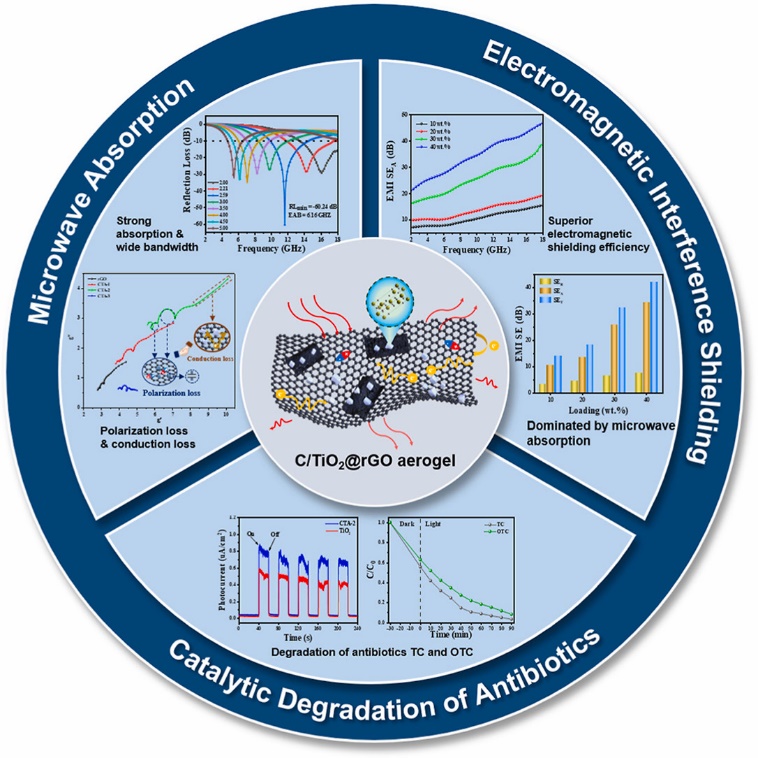The worsening electromagnetic radiation and water pollution are severely threatening people's living environment. Developing multifunctional nanomaterials to reduce the electromagnetic radiation and remove the pollutants from the aqueous solutions is attracting wide interest in the field of environmental protection. Now, a multifunctional C/TiO2@reduced graphene oxide (rGO) aerogel integrating microwave absorption, electromagnetic interference (EMI) shielding and photocatalytic degradation is prepared by one-step in-situ preparation derived from Ti3C2Tx MXene. As expected, the composite exhibits excellent microwave absorption performance at an ultra-low filler loading ratio of 3 wt% with minimum reflection loss (RLmin) of −60.24 dB and effective absorption bandwidth (EAB) of 6.16 GHz. It is demonstrated that the superior microwave absorption behavior is attributed to the unique interfacial construction and porous structure as well as the synergistic effect of enhanced dielectric loss and good impedance matching. Impressively, the as-obtained samples also display a superior EMI shielding efficiency of 52.63 dB and high photocatalytic degradation efficiencies of 96.5 % and 91.6 % for antibiotic tetracycline (TC) and oxytetracycline (OTC), respectively, which reveals its multiple utility essence. Consequently, this work provides a promising multifunctional material for integrated environmental applications and offers an innovative solution to current environmental problems.

Graphical abstract
The results are published in the journal Carbon under the title One-step in-situ preparation of C/TiO2@rGO aerogel derived from Ti3C2TxMXene for integrating microwave absorption, electromagnetic interference shielding and catalytic degradation of antibiotics.(Paper link:https://doi.org/10.1016/j.carbon.2023.118610)
